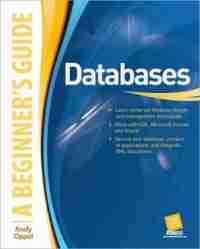Faster previews. Personalized experience.
Get started with a FREE account.


by Jeff Hammerbacher
384 Pages
·
2009
·
1,075 Downloads
·
New!
With this insightful book, you’ll learn from the best data practitioners in the field just how wide-ranging — and beautiful — working with data can be. Join 39 contributors as they explain how they developed simple and elegant solutions on projects ranging from the Mars lander to a Radiohead video.

by C. J. Date
200 Pages
·
2008
·
1,092 Downloads
·
New!
Chris Date, one of the founders of the relational model, has updated and expanded his relational database dictionary to include more than 900 terms.

by C. J. Date
568 Pages
·
2006
·
2,905 Downloads
·
New!
Date on Database: Writings 2000 2006 captures some of the freshest thinking from widely known and respected relational database pioneer C. J. Date. Known for his tenacious defense of relational theory in its purest form, Date tackles many topics that are important to database professionals, including the difference between model and implementation, data integrity, data redundancy, deviations in SQL from the relational model, and much more.

by Gavin Powell
504 Pages
·
2005
·
1,129 Downloads
·
New!
The perfect reference for programmers, administrators, or Web designers who are new to database development and are uncertain as to how to design and structure a database efficiently.

by Carolyn Begg
1430 Pages
·
2004
·
3,061 Downloads
·
New!
This book places a strong emphasis on good design practice, allowing readers to master design methodology in an accessible, step-by-step fashion. In this book, database design methodology is explicitly divided into three phases: conceptual, logical, and physical. Each phase is described in a separate chapter with an example of the methodology working in practice. Extensive treatment of the Web as an emerging platform for database applications is covered alongside many code samples for accessing databases from the Web including JDBC, SQLJ, ASP, ISP, and Oracle’s PSP. A thorough update of later chapters covering object-oriented databases, Web databases, XML, data warehousing, data mining is included in this new edition. A clear introduction to design implementation and management issues, as well as an extensive treatment of database languages and standards, make this book an indispensable, complete reference for database professionals.

by Martin Kleppmann
144 Pages
·
2015
·
1,336 Downloads
·
New!
Want to know how the best software engineers and architects structure their applications to make them scalable, reliable, and maintainable in the long term? This book examines the key principles, algorithms, and trade-offs of data systems, using the internals of various popular software packages and frameworks as examples.